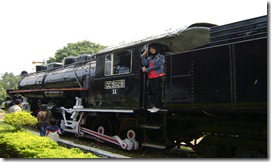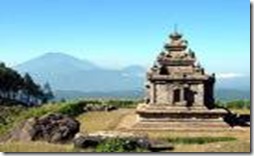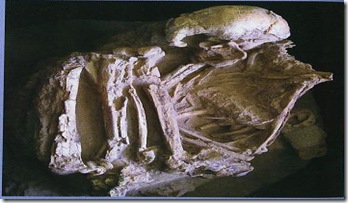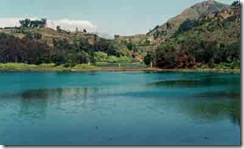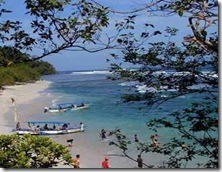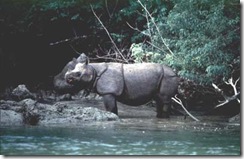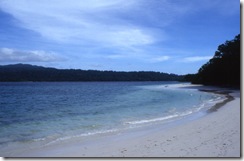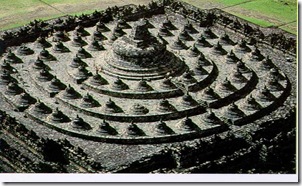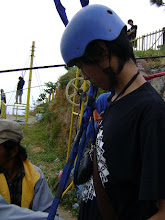JAVA TOURISM
Bromo
This National Park is one of the most beautiful places of interest in East Java. The beauties of mountain covered, give a special and characteristic green plants, arousing great interest. Tenggerese traditional farming also makes this famous place being more interesting and attractive. In addition, cool and breezy wind always blows freshly giving ever visitor special deep impression a unforgettable memories.
The accessibility has no problem and very reachable (via Malang, Pasuruan, Probolinggo or Lumajang).
Surely, different access give different characteristics scenery landscape. The elevation reaches about 2.392 meter sea level above and the temperature varies from 3 up to 20 degrees centigrade.
Facilities: Star Hotels, home-stays, restaurants, and many others that visitors needed can be found.
The people who live in this area are supposed to be descended from Majapahit Kingdom about six hundred years ago. The belonged to Tenggerese Hinduism with old traditional. That tradition still survives up to now. Every year, they always carry out the traditional and religious ceremonies, and the most popular ones is Yadnya Kasada, an offering ceremony held at the edge of the crater on the top of mount Bromo.
Source :
Ambarawa Railway Museum
Ambarawa is famous nationwide by the credo Palagan Ambarawa. Small city that forgotten nowadays but became one of the important base camp of National heroes during Dutch occupancy in World War II. A small city in the junction of national road between Yogyakarta to Semarang and accessible to several small cities nearby like Salatiga, Magelang and Bandungan. Fifty km south of Semarang, Ambarawa has locomotives of various types and ages, and it is still possible to ride on a cog railway between Ambarawa and Bedono, a village nearby. Ambarawa Railway Museum 50 km south of Semarang, Ambarawa is the home of Java's antique locomotives, housed in a museum. Prior arrangements should be made for groups. Also of interest are a collection of antique telephones and other instrument used for railway communication.
The museum was established in the 1970s primarily to preserve a wide selection of the steam locomotives, which were then coming to the end of their useful lives on the 3ft 6in (1067mm) gauge railways of the Indonesian State Railway (the Perusahaan Negara Kereta Api, PNKA). These are parked in the open air next to the original station, originally a transhipment point between the 4ft 8 in gauge branch from Kedungjati to the northeast and the 3ft 6in gauge line onward towards Yogyakarta via Magelang to the south. It is still possible to see that the two sides of the station were built to accommodate different size trains. Ambarawa lays some way above sea level and was an administrative centre for the Dutch colonialists. Now the provincial Government of Central Java is increasingly taking an interest from the point of view of its heritage significance and its potential as a tourist attraction. Non-Governmental bodies like the Semarang Heritage Society are also acting to assist and there is also an unofficial overseas group 'The Friends of Ambarawa Railway Museum'.
http://www.indonesia-tourism.com/central-java/ambarawa-museum.html
Bandungan and Gedong Songo Temple
This is a resort on the slope of mount Ungaran, about 900 meters above sea level. Gedong Songo (nine buildings), a group of small 8th century Hindu Javanese temples, can be reached either by car or on horseback from the town. Built at about the same time as the temples of the Dieng complex, Gedong Songo is one of the most beautifully sited temple complexes in Central Java and the views alone are worth the trip. Gedung Songo ('Nine Buildings') belong to the earliest antiquities of Java, they follow up the temples on the Dieng Plateau directly, for what about time. They were also built high in the mountains in an area full with volcanic activity; and they were also from Hinduist origin. But where the temples on Dieng Plateau are somewhat squeezed into a foggy valley, Gedung Songo are spread over the higher parts of the mountains, which guarantee a splendid view. On clear days, the horizon is one long row of volcanoes, from mount Lawu in the east, towards mount Sumbing, mount Sundoro and Dieng Plateau in the west.
The temples were built between 730 and 780, the first temple excepted, which could have been built some 30 years later. Gunung Songo is not the original name and also doesn't point at the number of structures. The number nine has a special meaning in the Javanese culture, in which there is a strong attachment to numbers. The temples are located at about the same distance from each other (100 meters, 200 meters) on a naturally formed terrace of edge of a mountain.
http://www.indonesia-tourism.com/central-java/gedong-songo-temple.html
Sangiran
Sangiran is located 15 km from Surakarta. It is a village located 17 Km north of Solo, on the road to Purwodadi. It is an important place for Pithecanthropus Erectus, the pre-historic Java man. It is fossilized land of prehistoric living things. The Pleistocene Museum keeps some skills of the erectus, fossils of plants and animals. Sangiran and other places such as Wajak (near Tulungangung) and Trinil (near Ngawi) are significant places for human evolution/theory. It is interesting place for scientific tourism in the field of geology, anthropology and archeology. Many experts came to this site to do some research and study among other; Van Es (1939), Duyfyes (1936), Van Bemmelen (1937), Van Koeningswald (1938), Sartono (1960), Suradi (1962) and Otto Sudarmaji (1976). Van Koeningswald said that more than five different types of hominoid fossils have been found in Sangiran, it was incredible. There is no other place in the world like Sangiran. The Sangiran fossils are very various, they were earth as well as sea fossils. There was a possibility that island of Java was erected from the bottom of sea million years ago.
In 1891, Eugene Dubois, a French anthropologist discovered fossils of Pithecanthropus Erectus, the oldest Java man known. Again in 1930 and 1931, Ngandong Village, Trinil-Mojokerto, was marked with the discovery of fossils of a man that belonged to the Pleistocene Period. It revealed human history from many centuries ago. Prof. Dr. Van Koenigswald in 1936 found more evidence about human evolution. He discovered some fossils that support the theory of human growth from an ape-man to be man as we are now. Other fossils including those of mammoths (prehistoric elephant) are now preserved in the Bandung Geological Museum. In mid 1980, the finding of a complete 4 m tall elephant startled scientists. Nowadays, the villagers of Sangiran are making souvenirs from stones such as statues, axes, eggs, rings, etc to promote tourism.
http://www.indonesia-tourism.com/central-java/sangiran.html
Dieng Volcanic
Dieng Volcanic Complex (also called the Dieng Plateau) is a complex volcano. A complex volcano is an extensive assemblage of spatially, temporally, and genetically related major and minor volcanic centers with the associated lava flows and pyroclastic rocks. This is another place worth visiting in Central Java, situated around 2000 m above sea level and 100 km from Borobudur. This area northwest of Yogyakarta is in the volcanic mountains and over 2,000 meters elevation. The name "Dieng" means "abode of the gods." There the visitor can find restarted temples build around year 800, colorful lakes and steaming ones. On the road we will see how the farmer use all the land available by using terraces. It's also fresher up here and we are almost above the clouds. The plateau, located 2,093 meters above sea level, offers two sunrises, the golden sunrise and the silver sunrise. Both are equally amazing natural phenomena. The golden sunrise refers to the first sunrise between 5:30 and 6 a.m. It is said to be golden because of its sparkling golden red color. We can enjoy this sunrise from a viewing post at a height of 1,700 meters above sea level in Wonosobo. The place, located in a mountainous area, is easily accessible because the roads leading to this area are all paved.
After savoring the beauty of the double sunrise, a natural phenomenon perhaps found only on Dieng Plateau, we could still enjoy the beauty of the surrounding nature. Walk about 10 minutes over a distance of some two kilometers to the southeast of the temple where there is a colorful lake. From the top of a hill the lake reflects a greenish yellow color, the reflection of the sulfate acid that the lake water contains. Beside this colorful lake there is another lake with pristine water. Locals call it the mirror lake because the water is very clear. The surface of the lake water also reflects sunlight. Unfortunately, this beautiful morning panorama is slightly impaired by the rampant felling of trees around the lakes. Unless the tree feeling is checked, this beautiful panorama will soon vanish for good.
Beside the beautiful panorama above, there is also small monuments, which are not more than 50 feet high stand on a crater floor amidst sulfurous fumes and underlined by the presence of a few of the starkest Shivaite temples at an elevation of more than 6.000 feet, are impressive. The site is located four hours from Semarang. In this site, the visitor will see some of the oldest Hindu temples of Java. On the way to the Dieng Plateau, visitors will pass through tobacco plantations and beautiful mountain scenery. This area can reach about four hours from Semarang, the site of some of the oldest Hindu temples on Java. These 50m-foot high monuments stand on a crater floor amidst sulfur fumes. The road to the Dieng Plateau passes through tobacco plantations and beautiful mountain scenery.
http://www.indonesia-tourism.com/central-java/dieng-plateau.html
MOUNT MERAPI
Driving through Yogyakarta's countryside is a pleasure due to its various scenic spots of idyllic villages and fertile farmland spread out with the horizon of the mountainous landscape.
The vicinity of Yogyakarta is a natural vacation land that offers all possibilities for an enjoyable holiday. There are hill resorts on the mountain slope for relaxation with invigorating weather. Mountain lovers will experience a real adventure of mountaineering. Mount Merapi is situated north of Yogyakarta with a height of 2,920 metres above sea level. From a distance, one can always see the white smoke appearing from the top of the volcano, raising to the air and the moving clouds in the deep blue sky.
The crater of the volcano is a sandy plateau of about four hectares with several smaller craters, which are still active. The top of the volcano can be observed from a distance from Turi Village, country area at the western side of slope, about fifteen kilometres from Yogyakarta. For a better view, a visit to Plawangan, the observatory resort, can be reached by walking up a pathway from Kaliurang for about an hour. In the observatory resort, visitor can use a binocular to observe the top of the volcano. The best time to relish the beauty of Merapi is approximately around the sunrise moment, at six to eight in the morning.
When the volcano is not active, visitors may climb up to the top of Mount Merapi that can be reached within seven to eight hours. The shortest route to the top that would take about 3 hours is from Selo, a village between Merapi and another mountain, the Merbabu. For those who interested climbing Mount Merapi, it is advisable to obtain some valuable information from the Department of Volcanology in Yogyakarta.
PANGANDARAN BEACH
Small mainland peninsula with a national park with beaches and stunning scenery to rival the beaches of Bali on the south coast of Java. Pangandaran is one of Java's best-kept secrets as far as international tourists are concerned, but has been extremely popular with locals for along, long time. A small fishing town, it possesses one of Java's finest beaches and Pangandaran Nature Reserve teems with wild buffalo, barking deer and monkeys. The people are very friendly, this combined with the idealize surroundings make this a great place to spend a few days relaxing island-style. Pangandaran is halfway between Bandung and Yogya, about 5 hours by bus from Bandung and 8 hours from Jakarta.
UJUNG KULON
On the south western of the island of Java, where the vast expanse of the Indian Ocean and equatorial waters of the Sunda Straits merge, is on of Indonesia's paramount national parks, Ujung Kulon. Rich in wildlife and forest, noted for its charm and diversity, it is the home of the highly endangered Java Rhinoceros and bestowed with the status of World Heritage (natural) site.
Ujung Kulon which means West Point, possesses an exceptional profile of Indonesia's wilderness from forested mountain ranges to coral seas. What makes it even more remarkable is that the park remains a pristine haven of nature, on Java, one of the most densely populated island on earth.The park is 120,551 hectares are divided into 78,214 ha of land and 44,337 ha of surrounding reefs and sea. It can roughly be separated into three areas, the triangular shapedUjung Kulon Peninsula, theGunung Honje Range to the east of the Peninsula's Isthmus and the Island of Panaitan to the north west.
Ujung Kulon's tropical maritime climate, somewhat cooler than inland areas of Java, produces an annual rainfall of approximately 3250 mm.Temperature range between 25° and 30° C with a humidity level generically between 80% and 90%. April to October are the drier months, particularly between July to October. During these months there are long periods of fine, calm weather with occasional spells of overcast skies, rain and rougher seas.
Ujung Kulon National Park is one of the last remaining natural forest on Java and one of very few areas offering a profile of sea-shore to mountain top tropical vegetation.The park holds well over 700 species of plant life of which at 57 are classified as rare in Java and perhaps the world.
Ujung Kulon National Park has a vast array wildlife, quite a member of which are endangered or rare. Some of animals are so unafraid that freely wander in and around the tourist lodges, others are sighted almost every days, many are heard rather than seen and same core rarely seen.
The park has a wide variety of marine habitats. The rocky shores, mangrove swamps, mud flats, sea grass beds, coral reefs and sea trenches, providing diverse and fascinating insights into the underwater world.
The Krakatau Island are part of the Ujung Kulon National Park, to anyone interested in natural proses, Krakatau or Krakatoa is one of the most fascinating areas in the world. The cataclysmic eruption of 1883 captures the imagination, and spectacular volcanic activity continuous to the present. To those interested in biology and the way island are colonized by plants and animals - not only the island from which life was eradicated by the 1883 eruption, but also the new island of Anak Krakatau - the area holds a unique attraction.
source
http://www.ujungkulontour.com/
YOGYAKARTA
It Stretch’s from the slopes of mighty mount Merapi Indonesia’s most active volcano in the north, to the java swept beaches of the powerful Indian ocean with a 100 km long coastline to the south. It was the mighty Javanese Empire Mataram, Nga Yogyakarta Hadiningrat. Yogya’s rich living culture today has its roots in the distant past. Habitation of the region dates back to Java Man (Pithecanthropus), whose remains have been found in the solo area, some 60 km away.
The history of modern Yogyakarta can be formally dated to the officially founding of the city in 1755, after the Kingdom of Mataram was found in two under treaty with the Dutch Colonial rulers. Today the province of Yogyakarta is the only independent Sultanate in Indonesia.
Hinduism and Buddhism armed early in java from India, brought by traders sometime around the 1st or 2nd century AD. Archeological remain from the Hindu and Buddhist (Majapahit) Kingdom in central Java area are today among the principal tourist attraction. These include the UNESCO designated World Heritage sites of Borobudur and Prambanan. Hindu and Buddhist cultural influences are still very important in modern Javanese daily life, especially in the performing arts. The Kraton of Yogyakarta is still the hub of Yogyakarta’s traditional life and despite the advances of the 20th century, it still radians the spirit of refinement, which has been the hallmark of its art and people for centuries. Yogyakarta is one of the supreme cultural centers, of java. Yogyakarta is well known as a center of traditional Javanese handicraft and leather products mostly produced by small enterprises at village level throughout the region.
All visitors to the city of Yogyakarta know of its rich Javanese culture, apparent in the Sultan’s palace and its batik, painters, dancers and shadow puppet shows. Few are aware, though, of the modern site of Yogya. With a disproportionately large member of Universities and learning center and these students and teachers innovative thinking, youthful enthusiasm and sign at the modern world abound, making it much like any another university town in the world.
The main difference is that Yogya’s students are leaving involved in Javanese culture, for example, they are often dancers in Ramayana epics or practice with gamelan orchestras in their spare time. Long accustomed to the blend of tradition and the contemporary, they hardly sale any notice of low the two world coexist.
Another side of Yogyakarta province often overlooked by tourist is its natural beauty. Designated as a special province, the province is larger than only Yogyakarta city. It is also offering nature experiences that some visitors stay long enough to explore.
Touring Yogyakarta province is a matter of personal preference, well-needed travelers as well as those watching their budget can arrange their itineraries around any of large number of interest.
Explorations into the Javanese culture, or its temple, or its museum are the most common. Nevertheless, it is little-known that many people come here to buy goods for expect. Without leaving the city, a shopping tour could include batik, antiques, art, leather, embroidery and souvenirs. In addition, by expanding beyond the city limits people could add earthenware pottery, silver, brass and furniture to the itinerary. Sport enthusiasts could thrive for several days on golf, tennis, health clubs and fitness centers. Then there are nature expeditions, accessible by bicycle, by car or on foot. Most nature programs offer choices to suite physical capabilities and desire ranging from moderate to extreme.
source


